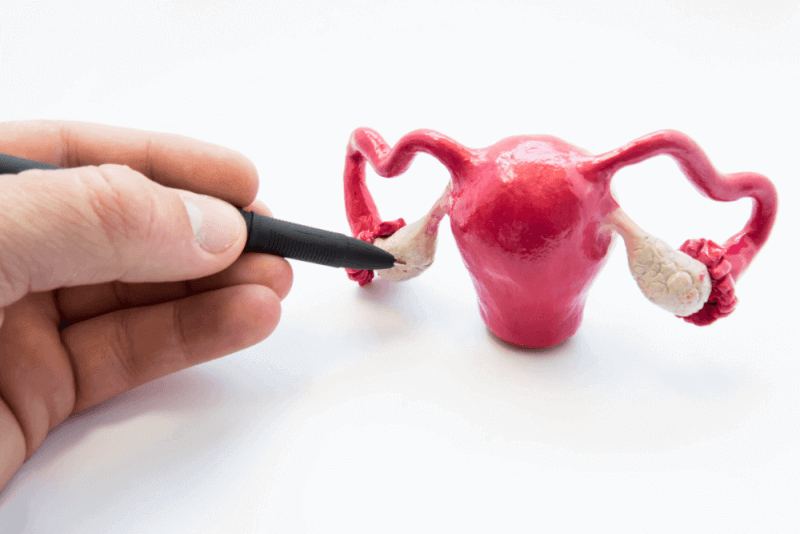What is abortion?
Procedures to terminate a pregnancy are called abortion. Various medications or surgical methods are used for this. In the abortion procedure, the placenta is removed along with the fetus.
Why is abortion performed?
The reasons for compulsory abortion are divided into two categories: medical and legal. Medical reasons include the following.
- Endangerment of the mother's life due to pregnancy
- Preeclampsia
- High blood pressure
- Diabetes
- Presence of cancer
- Fetal anomalies
- The baby's heart stops
The legal reasons for abortion include the following.
- The victim becomes pregnant after sexual assault
- Getting pregnant at a young age
- A woman with intellectual disability becomes pregnant
In addition to these, abortion on demand is also among the reasons for abortion. Voluntary abortion is the termination of pregnancy by the decision of the woman or the couple without medical or legal necessity.
How is an abortion performed?
Abortion can be performed in a licensed hospital and by licensed doctors. The legal period for abortion varies by country, but the procedure is usually performed on fetuses up to 10 weeks old. Abortion is prohibited in some countries, but in others it can last up to 24 weeks. These legal deadlines do not have to be respected in the event of a health problem in the womb or the death of the fetus.
Today, surgical methods are generally preferred in abortion procedures. Surgical procedures are not only easy and practical but also lower in terms of risk. Abortion procedures performed under local or general anesthesia take 10-15 minutes. After the abortion procedure, patients are asked to rest in the hospital for 1 hour. Antibiotic treatment is also used to prevent possible infections.
The stages of the abortion procedure are as follows.
Inspection
Patients should be thoroughly examined before abortion. During this examination, it is also necessary to determine the week of pregnancy. If the gestational week is within legal limits, the patient is prepared for abortion.
Determining the methodology
Termination of pregnancy can be done with different methods. Among these methods, the most suitable method for the patient should be determined by the specialist doctor.
Legal procedures
Abortion is also a legal procedure. For this reason, if the individual is under the age of 18, the signature of the parents must be obtained before the operation. In addition, in some countries, the consent of the woman is sufficient for the termination of pregnancy, while in others the consent of both the woman and the man is mandatory. The consent signature of the persons concerned must be obtained in accordance with the legal regulation in the country.
Operation preparation
Patients should not eat or drink anything for 5-6 hours before the operation. In addition, a general examination is required to determine the general health status of the patient.
When is an abortion performed?
In addition to the fact that there are legal regulations on when abortion can be performed, the period deemed appropriate for the protection of maternal health from a medical point of view is the period of pregnancy. 5. or It happens in the 6th week.
Symptoms of infection after abortion
The equipment and clinical conditions to be used for the abortion procedure are sterilized before the procedure. For this reason, the likelihood of infection in patients who have had an abortion is extremely low. However, even if all precautions are taken, some patients may develop an infection after the procedure. Especially not paying attention to personal hygiene after the procedure, not using the medication prescribed by the doctor and sexual intercourse are among the factors that increase the risk of infection.
Bleeding after abortion
After the abortion procedure, patients may experience vaginal bleeding, which is part of the healing process as well as ensuring that the uterus is completely cleansed. Bleeding may start immediately after the abortion procedure and may continue for 1 to 2 weeks. Bleeding after abortion is similar to menstrual bleeding, but its intensity is mild or moderate.
Recovery after abortion
Good patient care after abortion ensures that the healing process is overcome faster and more comfortably. It is therefore important to rest for a few days after the procedure. In addition, medication prescribed by the doctor should be used regularly and personal hygiene should be observed to prevent infections.
Risk factors for abortion
Although side effects caused by abortion are rare, the most common risks include the following.
- Infection
- Dizziness
- Bleeding
- Nausea
- Pregnancy tissue remaining in the uterus
- Reaction to medicines
- Wound on the cervix
Complications of abortion
Abortion is one of the operations that are generally recognized as safe. However, as with any surgical procedure, abortion can cause some complications. Although these complications are rare, they include the following.
- Intense bleeding
- Depression
- Injury or damage to the uterus
- Anxiety
- Intrauterine infection
- Fever, chills and weakness that can be seen due to infection
- Severe abdominal pain
Things to consider after an abortion
After both medical and surgical abortion, patients do not need to attend a follow-up appointment. Instead, a pregnancy test is sufficient. The drugs used for medical abortion can cause diarrhea and nausea in patients. After surgical abortion, due to the effects of anesthesia, the following are among the points to be considered after abortion.
- In case of pain after an abortion, medicines such as ibuprofen or paracetamol can be taken on doctor's advice.
- It is recommended to use sanitary pads in case bleeding occurs.
- If sexual intercourse continues, contraception should be used.
- After the abortion procedure, the patient can return to her daily routines as soon as she feels well.
Types of abortion
Although there are different methods for abortion, 2 methods are often used. These commonly used methods are medical abortion and surgical abortion.
Medical Abortion
In medical abortion, the pregnancy is terminated without the use of any surgical procedure. For this, patients are given various medications. It may take up to 24 hours after the medication for the abortion to take place. For this reason, it is extremely important that the patient remains under expert control during medical abortion.
Abortion pill
Abortion pills are particularly effective in the first 10 weeks of pregnancy. The medication induces uterine contractions. In this way, the inner layer of the uterus is shed. In this way, the pregnancy tissue is expelled.
Surgical abortion
In surgical abortion, the fetus and placenta in the uterus are removed using surgical methods. There is more than one method of surgical abortion. The most common of these methods is the vacuum method.
Vacuum abortion
In the vacuum abortion method, the pregnancy tissue is vacuumed out of the uterus. For this, a special vacuum device is used to dilate the cervix. It is suitable for use between 6 and 16 weeks of pregnancy.
Probe abortion
Probe abortion is an abortion method applied to women with abnormal bleeding during pregnancy. It is also used to take a biopsy sample from patients with thickened uterine wall. Bleeding stops after probe abortion, which is both a diagnostic and therapeutic method.
Pipelle abortion
It is a procedure for taking a biopsy sample of the endometrium. In infertility patients allow evaluation of the endometrium. In addition, the pipelle abortion procedure provides many advantages for women in menopause.
Fractionated abortion
Fractionated curettage allows tissue sampling from two sites, both the endocervical canal and the endometrium. This method uses a metal shovel to locate the bleeding site. Fractionated abortion allows the detection of both uterine and cervical pathogens.
Revision abortion
It is an abortion procedure performed when pregnancy tissue remains after a miscarriage. In this process, the tissue is first vacuumed and then controlled with metal equipment.
Boom abortion
It is an abortion method used to terminate large pregnancies. In addition to being one of the abortion techniques applied under anesthesia, the width of the instruments used in this procedure can be up to 18 mm. this can be used to remove fetuses in advanced gestation.
Sexual intercourse after abortion
After an abortion, you should wait 2 weeks before having sexual intercourse. This is the time it takes for the cervix to recover. Having intercourse with the cervix open increases the risk of infection. In addition, patients who continue to bleed after 2 weeks should continue to wait without having sexual intercourse. Otherwise, the healing process of the intrauterine lining will be negatively affected.
Ovulation occurs 20 days after the abortion. It is therefore possible to become pregnant again 20 days after an abortion. If pregnancy is not planned, contraception should be used from this time onwards.
What happens to the aborted baby?
The pregnancy tissue removed by abortion is a clotted and viscous liquid. After the abortion, this liquid is delivered to the medical waste unit in medical waste bags. Regardless of the method of abortion, it is not recognized as abortion material from the outside.
What changes occur in the body after an abortion?
Before an abortion, women's bodies regulate their hormones in accordance with the gestation period. After the sudden end of pregnancy, the excess of hormones in the body persists for several weeks. During this time, women's psychological and physical health is significantly affected. During this period, women are expected to feel tired, have mood swings, and experience sleep and appetite problems.
Is abortion performed after a miscarriage?
Patients who have had a miscarriage usually do not undergo an abortion. Usually, a healthy completion of the natural process of miscarriage leaves no pregnancy tissue in the uterus. However, in cases of incomplete miscarriage, the symptoms persist. In this case, an abortion may be necessary to completely clean the uterus.
Does abortion affect fertility?
If the abortion procedure is performed under healthy conditions, it has no effect on the pregnancy. For this reason, patients can become pregnant again within a short time after the abortion procedure. For this reason, patients are advised to have protected sexual intercourse when pregnancy is not desired. However, frequent procedures and lack of sterile conditions can adversely affect fertility.
Psychological state after abortion
Regardless of the reason for abortion, it can cause psychological changes in patients after the procedure. These changes include feelings of guilt, sadness or relief. Especially in people who have had an abortion for compulsory reasons, it is common to worry that they will not be able to conceive again. Although these feelings after an abortion are temporary, it is extremely important for patients to get support from their environment or a specialist.







